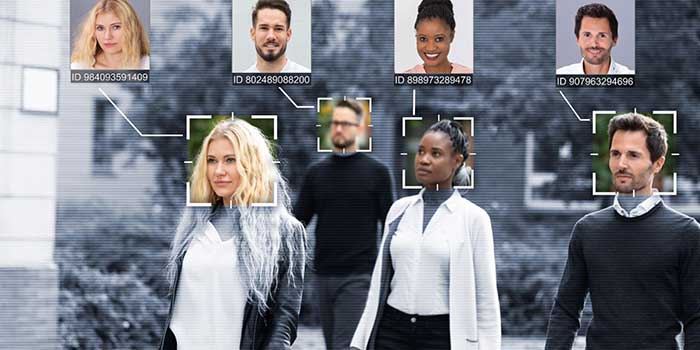Video MGMT System
 Access Control
Access Control
Voice & Data Wiring
 Burglar Alarm
Burglar Alarm
 Fire Alarm
Fire Alarm
Video MGMT System
Voice & Data Wiring
Too busy to read? Here’s a summary:
In this guide, we're going to dive deep into the world of access control hardware—the physical components that make reliable and secure entry management possible.
Let's break down the core hardware components of a typical access control system, beginning with credentials.
From the sophisticated world of biometrics and Bluetooth to traditional RFID cards and PIN codes, the presentation of an authentic credential is the first step to gaining entry through an access point.

Credential readers at access points serve as frontline interfaces for entry management. A user must present their credential to a reader for authentication.
The three main types of credential readers for access control are keypads, card readers, and biometric scanners.

Fingerprint scanners employ advanced sensors to capture detailed, digital representations of fingerprints, including unique ridge patterns and minutiae points.
Sophisticated algorithms then compare captured fingerprint data to pre-stored fingerprint patterns.
Iris scanners ID individuals by capturing unique iris patterns and comparing them to irises in the system’s database.
Iris scanners use infrared light to illuminate the eye and enhance distinct iris features. Advanced algorithms then compare scanned irises to those in its database.
Facial recognition scanners harness the power of machine learning and advanced image processing algorithms to break down facial features into complex geometric patterns and focus on key points of interest, such as the distance between eyes or the shape of cheekbones. The resulting data is then compared to stored facial patterns.

Credential readers transmit data from authenticated credentials to access control panels, which are also known as “controllers.”
Access control panels are the brains of the operation, the central units that log access data and make decisions regarding access privileges.
They cross-check identifying data transmitted from credential readers against preset access authorizations at the door where they’re presented. If there’s a match, the panel will transmit an electronic signal to unlock the access point temporarily.
While most access control systems with multiple doors require a central, networked control panel, those systems designed to manage a single entrance can often operate using standalone controllers, which operate independently.
Access control panels manage security hardware at each door, including electronic locks.
Electronic locks prevent unauthorized access by only unlocking when access is approved by the system control panel (or when administrators use buzzers and other tools to grant entry).
Three main kinds of locks are used in access control systems: magnetic locks, electric strike locks, and electromechanical locks.

Access control systems can be configured to meet most security and privacy regulations by logging all access data and requiring a second round of credential authentication before users are able to exit secured areas.
That said, in environments where logging exit data isn’t necessary, push-to-exit buttons and similar hardware can be installed at exit points (instead of proper credential readers).
Exit devices are commonly installed at exit points when exit data isn’t necessary. Exit devices improve workplace efficiency and are usually much less expensive than credential readers, which is why they are often preferred on the exiting side of a secured door.

Our team at Mammoth Security knows how to select, install, and customize an access control system that’s tailored to your site’s unique layout, workflow patterns, and security concerns, as well as any industry-specific regulations that may be relevant to you.
To schedule a 100% FREE, zero-obligation site survey and consultation with a friendly expert from our team, just fill out the simple blue form below.
NOT COMPLETELY SURE?
860-748-4292Access control hardware refers to the physical components used in access control systems to manage and control who has access to different areas of a building. This includes card readers, keypads, biometric scanners, electronic locks, door controllers, identification media, exit devices, and access control panels.
Access control hardware works by coordinating inputs and outputs from different devices to authenticate identities and manage access to controlled areas. The system allows or denies entry through an electronic locking system.
Access control readers come in various forms, including proximity card readers, smart card readers, and biometric scanners like fingerprint, facial recognition, and iris scanners.
Access control systems are extremely secure when properly configured and maintained. Advanced systems use encrypted communication, biometric identification, and anti-tampering features to provide high-level security.
In access control systems, a biometric scanner is a device that uses unique biological characteristics, such as fingerprints, facial patterns, or iris patterns, to identify individuals.
Electronic locks in access control systems control access to a door or gate. They only unlock for authorized users or when access is remotely granted by an appropriate administrator.
Access control panels are often considered the brains of an access control system. They coordinate inputs and outputs for all linked access control hardware and decide whether to grant or deny access based on matches between presented credentials and preset site authorizations.
Identification media refers to the means through which a user's identity is verified in an access control system. Identification media are also known as access control credentials. They include key cards, fobs, biometric data, and smartphones with NFC or Bluetooth enabled.